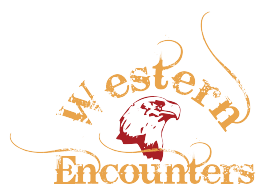
Smith & Wesson American .44
The .44 S&W American (commonly called the .44 American) is an American centerfire revolver cartridge.
Used in the Smith & Wesson Model 3, it was introduced around 1869. Between 1871 and 1873, the .44 Model 3 was used as the standard United States Army sidearm. It was also offered in the Merwin Hulbert & Co. Army revolvers.
It used an outside lubricated bullet of the same diameter as the .44 S&W Russian, with a slightly greater case neck diameter, and appeared in either Boxer and Berdan priming, and both black and smokeless powder loadings.
Its power resembles the .41 Long Colt, .32-20 Winchester, or .44-40 Winchester, and it could be used to hunt small game at short range.
The .44 American ceased to be commercially available around 1940. It can be handloaded by shortening and reforming .44 Special cases. Original black powder revolvers should only use light loads; modern powders will generate excessive pressures.
During the Gunfight at the O.K. Corral on October 26, 1881, Wyatt Earp carried an 8 inches (200 mm) .44 caliber 1869 American model Smith & Wesson. Earp had received the weapon as a gift from Tombstone, Arizona mayor and Tombstone Epitaph newspaper editor John Clum.
44 S&W American
TypeRevolver
Place of originUSA
Production history
Produced1869?-1940?
Specifications
Bullet diameter.434 in (11.0 mm)
Neck diameter.438 in (11.1 mm)
Base diameter.440 in (11.2 mm)
Rim diameter.506 in (12.9 mm)
Case length0.91 in (23 mm)
Overall length1.44 in (37 mm)
Rifling twist1:20
Primer typelarge rifle
Ballistic performance
Bullet weight/typeVelocityEnergy
205 gr (13.3 g) (factory load)682 ft/s (208 m/s)212 ft�lbf (287 J)
218 gr (14.1 g)660 ft/s (200 m/s)196 ft�lbf (266 J)
200 gr (13 g) (max)810 ft/s (250 m/s)296 ft�lbf (401 J)
205 gr (13.3 g) (Lyman[disambiguation needed ] #429478)800 ft/s (240 m/s)291 ft�lbf (395 J)
The Smith & Wesson model 3 was a single-action, cartridge-firing, top-break revolver produced by Smith & Wesson from 1870 to 1915, and again recently as a reproduction by Smith & Wesson themselves, Armi San Marco, and Uberti.
It was produced in several variations and sub-variations, including both the aforementioned "Russian Model" named because it was supplied to military of Tsarist Russia (20,000 No. 3's were ordered in .44 caliber by the Russian Army in 1871). and the "Schofield" model, named after Major George W. Schofield who made his own modifications to the Model 3 to meet his perceptions of the Cavalry's needs, which Smith & Wesson incorporated into an 1875 design they named after the Major, planning to obtain significant military contracts for the new revolver.
The S&W Model 3 was originally chambered for the .44 S&W American and .44 Russian cartridges, and typically did not have the cartridge information stamped on the gun (as is standard practice for most commercial firearms). Model 3 revolvers were also later produced in an assortment of calibres including .44 Henry Rimfire, .44-40, .32-44, .38-44, and .45 Schofield.]
Smith & Wesson produced large numbers of the Model 3, in three distinct models, for Tsarist Russia by special order. The first was the 1st Model Russian (the original order design), and the Russian Ordnance Inspector mandated a number of improvements to the design, resulting in the 2nd Model Russian, with a final revision to the Russian design being known as the 3rd Model Russian.
Smith & Wesson nearly went bankrupt as a result of their Russian Contract production, as the Tsarist government assigned a number of engineers and gunsmiths to reverse-engineer the Smith & Wesson design, and then began to produce copies of the revolver—both in their own arsenal at Tula and by contracting other manufacturers in Germany and elsewhere in Europe to manufacture copies of the revolver (a common practice at the time—Webley & Scott's British Bulldog revolver was widely copied, too, by European and American gunsmiths).
The Russian and European copies of the S&W Model 3 revolver were generally of very high quality, but considerably cheaper than the S&W produced revolvers. This led to the Tsarist government cancelling the order for significant quantities of Smith & Wesson–made revolvers (which Smith & Wesson had already produced), and delaying (or refusing) payment for the handguns that had already been delivered.
Western Store <> Western Writers <> Western Stars <> Western TV <> Country Music <> Guns <> Western Vacations
Western Hand Guns <> Repeating Rifles <> Hollywood Guns <> Gun Safety <> Ricardo Dos Reis






